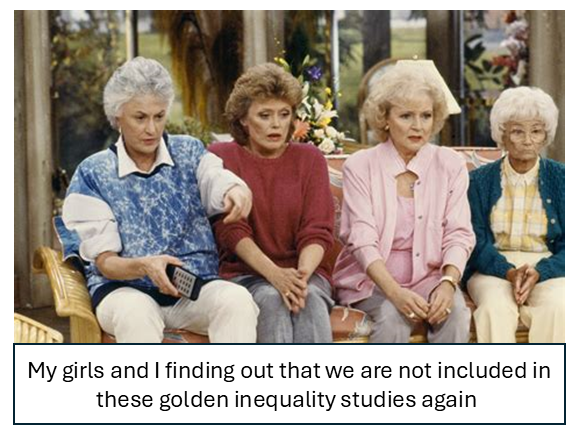Gendered sample biases in elderly research
In this research project I review and discuss sample measurements applied in studies on old-age inequalities from a gender lense and empirically reveal their implications for popular old-age outcomes across contexts.

Work in progress
Housewives never retire!? Gender biases in popular sample definitions for studies on the elderly
Even though research has emphasized the risk of a gendered sample selection bias for the elderly decades ago, the empirical literature on old-age inequalities up to date seems to be largely unaware of it. This article raises awareness of this issue by revealing the gendered sample selectivity for the population aged 65 or older for two popular sample criteria, the self-reported retirement status and pension receipt, for the countries covered in the Survey of Health, Ageing, and Retirement in Europe (SHARE). The results reveal that up to more than half of elderly women are excluded when using these sample measures. The gender selection bias varies largely across countries and is less pronounced in post-socialist or liberal welfare states. Visualizing the work trajectories by sample status indicates that particularly women with long trajectories of unpaid care work and men with large shares of self-employment, unemployment, and longer educational trajectories do not declare themselves retired or do not receive pensions. Studies using such sample criteria to capture the population of the elderly likely underestimate the level of inequalities. The selectivity arising from these two sample criteria can be particularly severe in large country comparison studies for which the sample bias more easily remains undetected. Such studies across many countries become more popular due to the availability of harmonized surveys such as SHARE or the Health and Retirement Study. While this article cannot provide a universal recommendation for a sample definition it aims to facilitate less biased sample definitions in studies on the old-age population.
